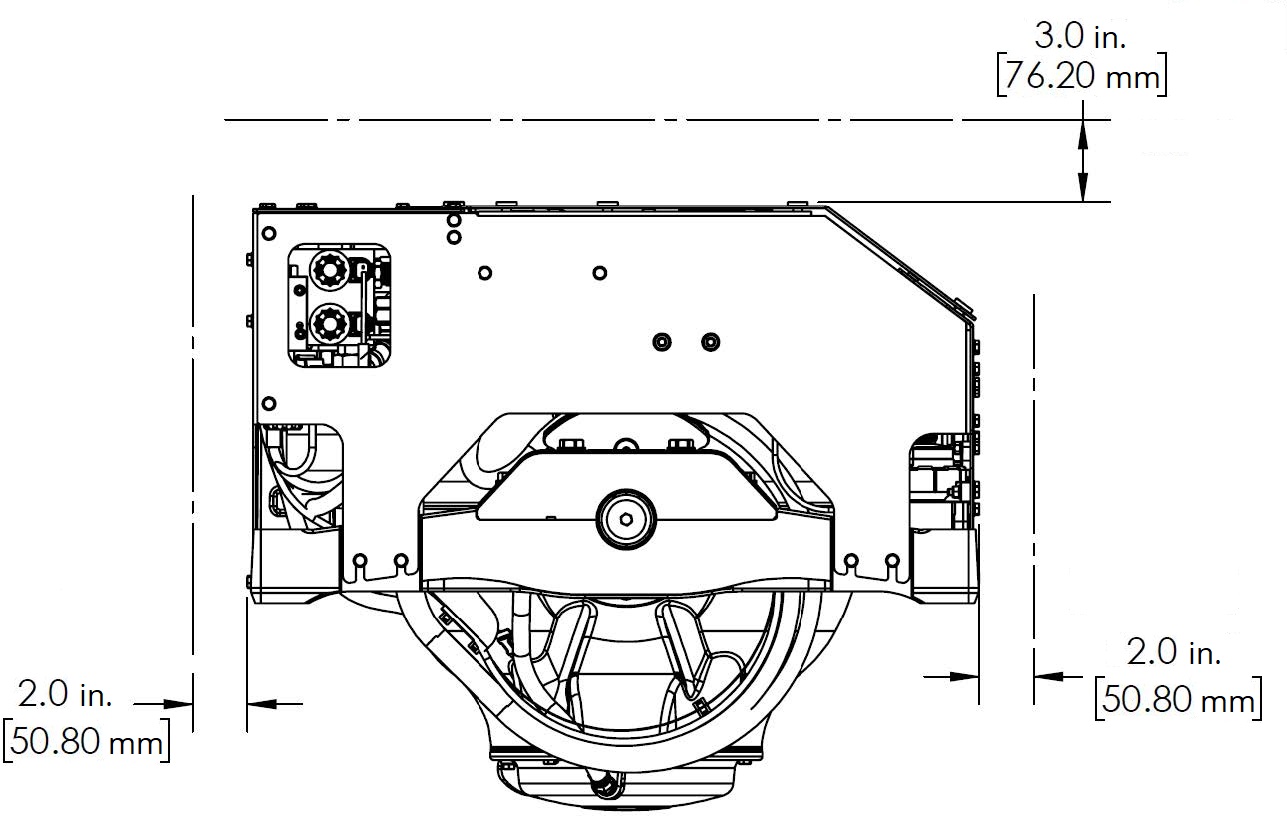Seakeeper 3 Installation Manual (90378-7); S/N 3-232-4223 to Current
2.2 Selection of Installation Location

Seakeeper can only assess installation location regarding its impact on Seakeeper operation and serviceability. Seakeeper cannot determine how the installation location will affect the vessel static or directional stability other than cyclic roll reduction. The Installer is responsible for considering the Seakeeper ’s effect on the CG location, trim, overall stability, and performance of the vessel.
Selection of mounting location of the Seakeeper should consider the following desirable features:
- Provide adequate clearance for all recommended scheduled maintenance and any repairs that may be necessary, as shown in Figure 4 and installation drawings.
- The Seakeeper should be installed in a dry space to minimize effects of corrosion.
- Installed near the vessel’s longitudinal center of gravity (LCG) to minimize effects on trim and performance in various loading conditions.
- Overhead access or sufficient clearance for removal / re-installation of the Seakeeper for overhaul in future years.


Refer to Figure 5 for recommended clearances to transverse or longitudinal beams. Clearances aft of the
Seakeeper are shown to provide access for regular scheduled maintenance.


2.2.1 Noise / Soundproofing
Seakeeper noise has been measured under steady state conditions (no wave load) in Seakeeper‘s Engineering Lab and in our Factory Demo Boat. The steady state noise is <72dBC at 1 meter. As the frequencies emitting the highest sound pressures are low (like other marine machinery), it is recommended that the Seakeeper be installed in an enclosed space such as a leaning post / seat, bilge, center console, or machinery space. This space can be treated with soundproofing if desired and does not require ventilation for Seakeeper operation.